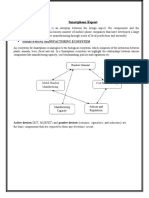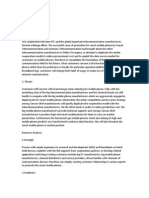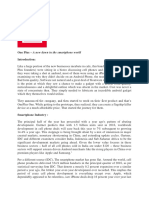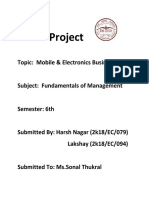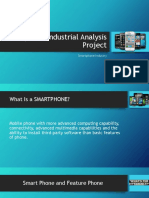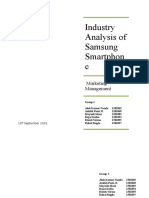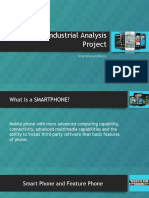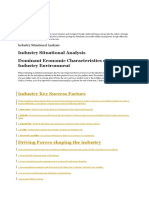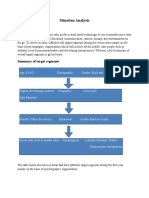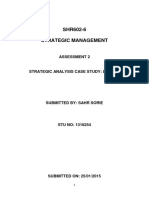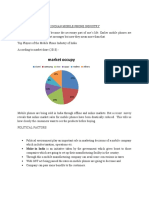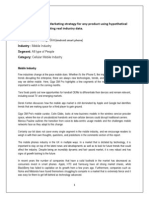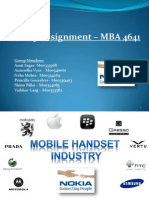0% found this document useful (0 votes)
57 views3 pagesAnalysis - Porter's 5 Forces
The document analyzes the competitive environment of smartphone manufacturers using Porter's 5 Forces framework. It identifies key competitors, the potential for new entrants like Huawei, supplier power, customer influence, and the threat of substitutes in the budget smartphone segment. Action items include strengthening brand loyalty, improving products, diversifying suppliers, and exploring new markets.
Uploaded by
alexanderdeasis264Copyright
© © All Rights Reserved
We take content rights seriously. If you suspect this is your content, claim it here.
Available Formats
Download as DOCX, PDF, TXT or read online on Scribd
0% found this document useful (0 votes)
57 views3 pagesAnalysis - Porter's 5 Forces
The document analyzes the competitive environment of smartphone manufacturers using Porter's 5 Forces framework. It identifies key competitors, the potential for new entrants like Huawei, supplier power, customer influence, and the threat of substitutes in the budget smartphone segment. Action items include strengthening brand loyalty, improving products, diversifying suppliers, and exploring new markets.
Uploaded by
alexanderdeasis264Copyright
© © All Rights Reserved
We take content rights seriously. If you suspect this is your content, claim it here.
Available Formats
Download as DOCX, PDF, TXT or read online on Scribd
/ 3








